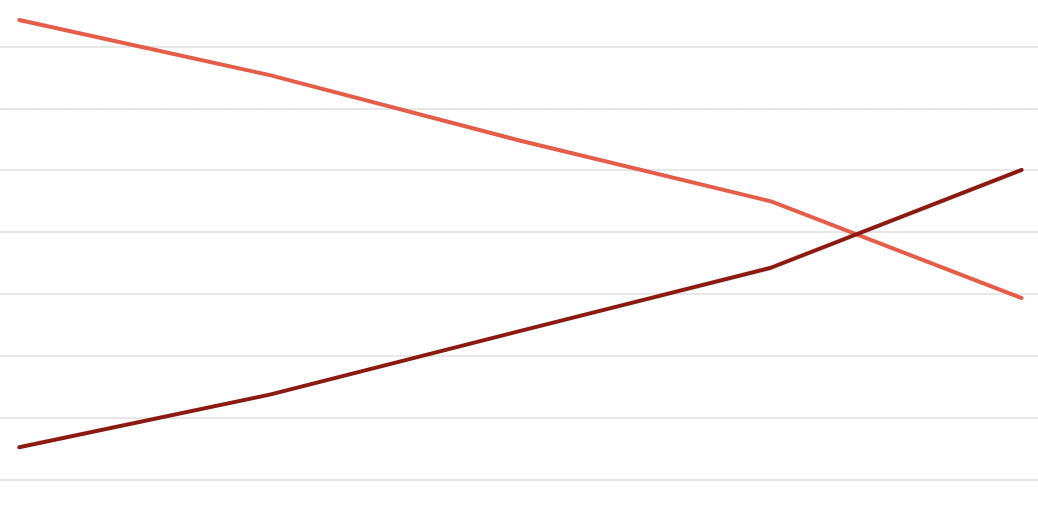The recent Victorian election was the first such election since the COVID-19 pandemic started, and it was yet another example of the trend towards people voting early being accelerated by the pandemic.
This was the first Victorian state election where a majority of votes were cast before election day, with over 60% of votes cast early as either a postal ballot or at a pre-poll centre. In comparison, only 15% of voters used these methods in 2006.
In 2006, almost 78% of people cast an ordinary election day vote, with another 6.5% as absent election day votes. That’s 84.3% voting on the day. In 2022, these numbers were 34.8% and 4.6%, for a total of 39.4%.
The pre-poll in-person vote has increased from 8.9% in 2006 to 49.5% in 2022. The postal vote was 6.3% in 2006, and had increased slightly to a previous peak of 8.3% in 2014, but jumped again to 10.6% in 2022.
Based on the previous trend, you would have expected the early vote to be about 55% in 2022 - the acceleration (which could potentially be explained by the pandemic) brings that number up to about 60%. It'll be interesting to see if the early vote can grow any more next election, or whether it gets close to a ceiling.
I'm not going to do my own analysis on who these different groups of voters cast their ballot for, in part because I don't have access to two-party-preferred votes for all seats at the local level. Helpfully, Antony Green has done so.
Overall, Labor suffered a 2.6% swing on the two-party-preferred vote. The swing was largest on election day. Labor actually gained a swing on the postal vote, and suffered a small swing on the pre-poll vote. It's worth noting that political parties have been banned from sending out their own postal vote application, which could explain the shift in postal ballots to a more left-leaning subsection of the electorate.
The gap between the Labor two-party-preferred vote on election day and on the early vote was particularly large in 2018, and has shrunk in 2022.
There's a lot more interesting analysis, including at the seat level, in Antony's post.




This potentially sees several elections or polls based on the time you decide to vote. It curtails the scandal element where some grace misdeed comes to light all too late.
This is a case of the KPI being to get as many to vote rather than a polling day that is determined by duty not convenience and is the result of compulsory voting not actually being a virtue. Unfortunately, elections and policy is all about how you feel…
I think the increasing trend towards early voting indicates that political parties will need to change the way they run campaigns in order to maximise their vote in this new environment.
Increasingly, the typical one-month or two-month vigorous campaigning period is probably having less impact as people are voting early, not waiting for announcements in the last week or two. Perhaps the increase in early voting indicates that voters are increasingly making their minds up pretty early, so typical, short campaigns are unlikely to be effective in swaying them, though I’m not totally sold on this idea.
As a consequence, political parties and independents probably need to start getting candidates out in the field much earlier, so that candidates and parties can make an impact on voters well before the early voting period. Candidates/parties probably also need to make sure all prepolls are manned, not just on polling day, otherwise a substantial number of voters won’t get how-to-vote cards or see much of the campaign.
Parties and candidates probably should also invest in some kind of more targeted, early voting campaign, as they can’t always rely on election day turnout. Running a postal vote or early vote campaign might mean parties/candidates gain votes (or at least not lose them) from voters who otherwise wouldn’t see booth campaign material. In Macnamara at the federal election, it looks like Labor suffered swings in most booths, but they gained a +5.9% swing on postal votes which I assume is indicative of a good postal vote campaign in a district where there is a substantial postal vote. I don’t know if the Greens ran much of a postal vote campaign there, but perhaps they might have got a better swing had they.
Leaving things to last minute gives me anxiety. So I always early vote usually via a postal because I like to get it out the way and I don’t have to stress later about waking up on election day having to vote, especially if the weather is bad or it is raining.
And I trust mail-in-ballots/postals much more than any other system. It is an easy and transparent system. Not sure why some politicians on the right keep attacking them. I have never had a problem with a postal/mail vote. And I would encourage more people to use them. Usually “Reasonable fear for safety” is a good enough reason in most circumstances, at least in my case. As COVID has evidently decreased the vote on the day and more early voting.
Early voting/Postal voting should be made easier and more widely available and should be encouraged, not attacked and restricted.
Daniel, I found it seems to be mostly us politicians attacking postal/mail voting because those votes tend to lean more democratic.
In Australia, it is the reverse as postal votes tend to favour the Coalition more.
Comments are closed.